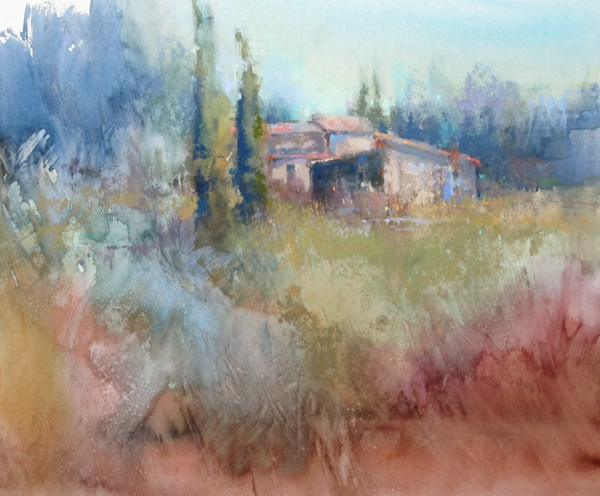Underpainting Techniques | An Incremental Approach

Pastelists who utilize an underpainting to establish a foundation in advance of pastel typically do so with one of two mindsets: They either, one, wish to create a utilitarian foundation that establishes the basic value and color masses; or two, they want to create a foundation that provides the potential for creative possibilities. Of course the two can be combined, generating even more interactive opportunities.

There are an array of underpainting techniques that can be employed to this end. Artists can choose to smear dry pastel using a paper towel or a piece of foam pipe insulation. Pastel can be wetted with an assortment of liquids such as water, rubbing alcohol or odorless mineral spirits. Multimedia techniques using watercolor, gouache or highly thinned acrylic/oil paint can also be utilized. No matter how the underpainting is done, or the artist’s purpose in doing it, most pastelists hope that part of it will show through in the final painting.
A Gradual Pastel Progression
When I begin the application of pastel over an underpainting, I approach it incrementally. If an area in the painting needs to be darker or lighter, warmer or cooler, I start with pastels that are very close in appearance to the underpainting and progressively nudge the selections toward the desired end effect. This allows the applied pastel to have a visual connection to the underpainting, making it appear less as though the pastel were plopped on to the painting—something I call “the Christmas tree ornament effect.” To better control the gradual application, especially if you have a heavy hand, start with harder pastel sticks and migrate to softer sticks. Work throughout the painting’s composition, placing more emphasis on the centers of interest. This allows the painting to evolve as if it were coming out of the fog into focus.
Does Your Underpainting Disappear?
If you find that consistently cover your entire underpainting, check the value scheme of the underpainting. If the basic value (light and dark) structure of the underpainting does not provide some relativity, it will ultimately have to be covered for the painting to make sense. You may also be one of those artists who just loves to apply pastel. It is the medium we fell in love with for this tactile pleasure. If so, approach your underpainting simply to get rid of a blank surface and enjoy the subsequent applications of heavier pastel. Working incrementally should not be thought of as being overly cautious. It is not about intimidation or fear of destroying the underpainting. Instead, it should be thought of as providing a better means of allowing for some of the underpainting to show through. With a light hand and a gradual approach, a visual relationship will be established and the underpainting and overpainting can work together to produce the final magic.





Have a technical question?
Contact UsJoin the Conversation!